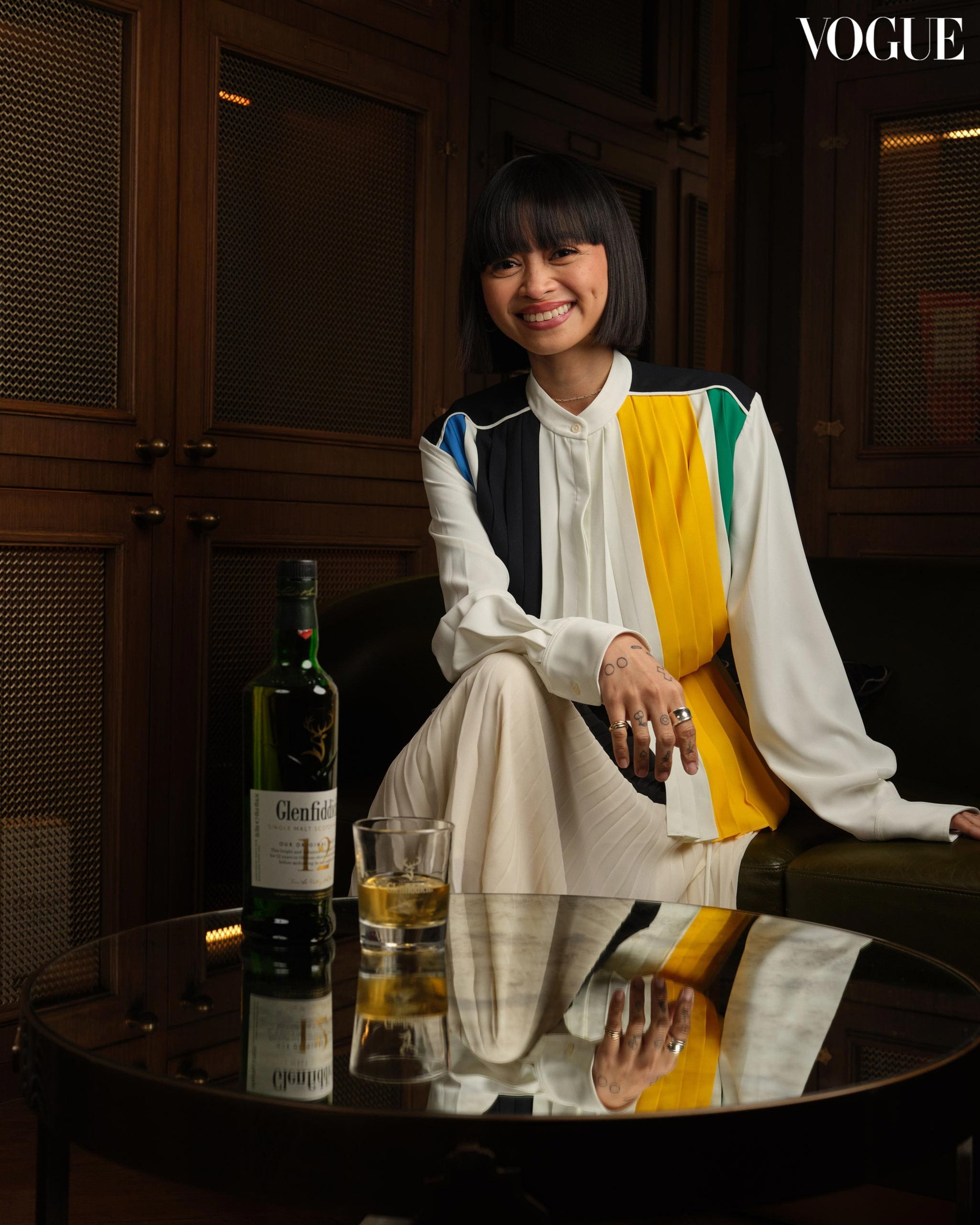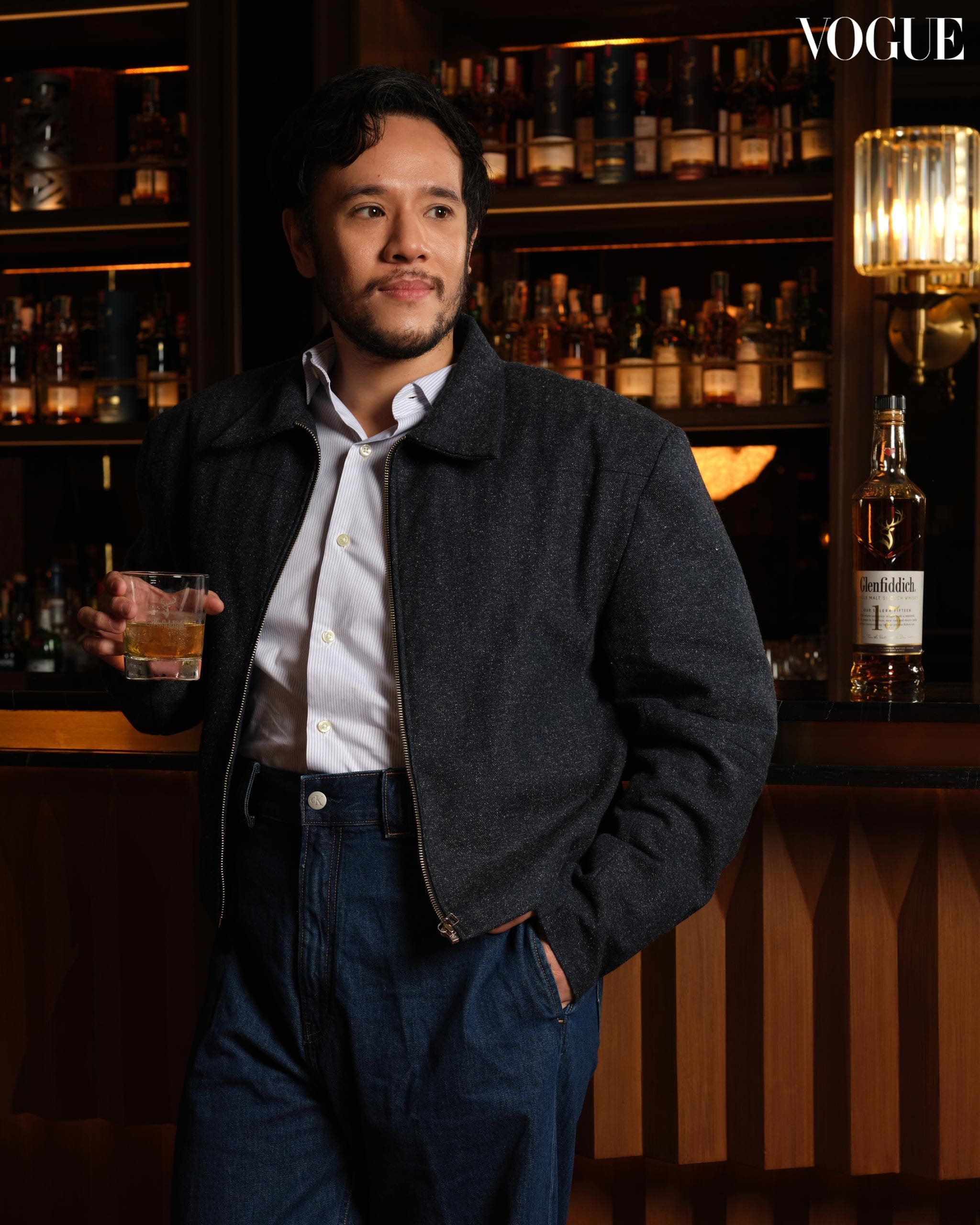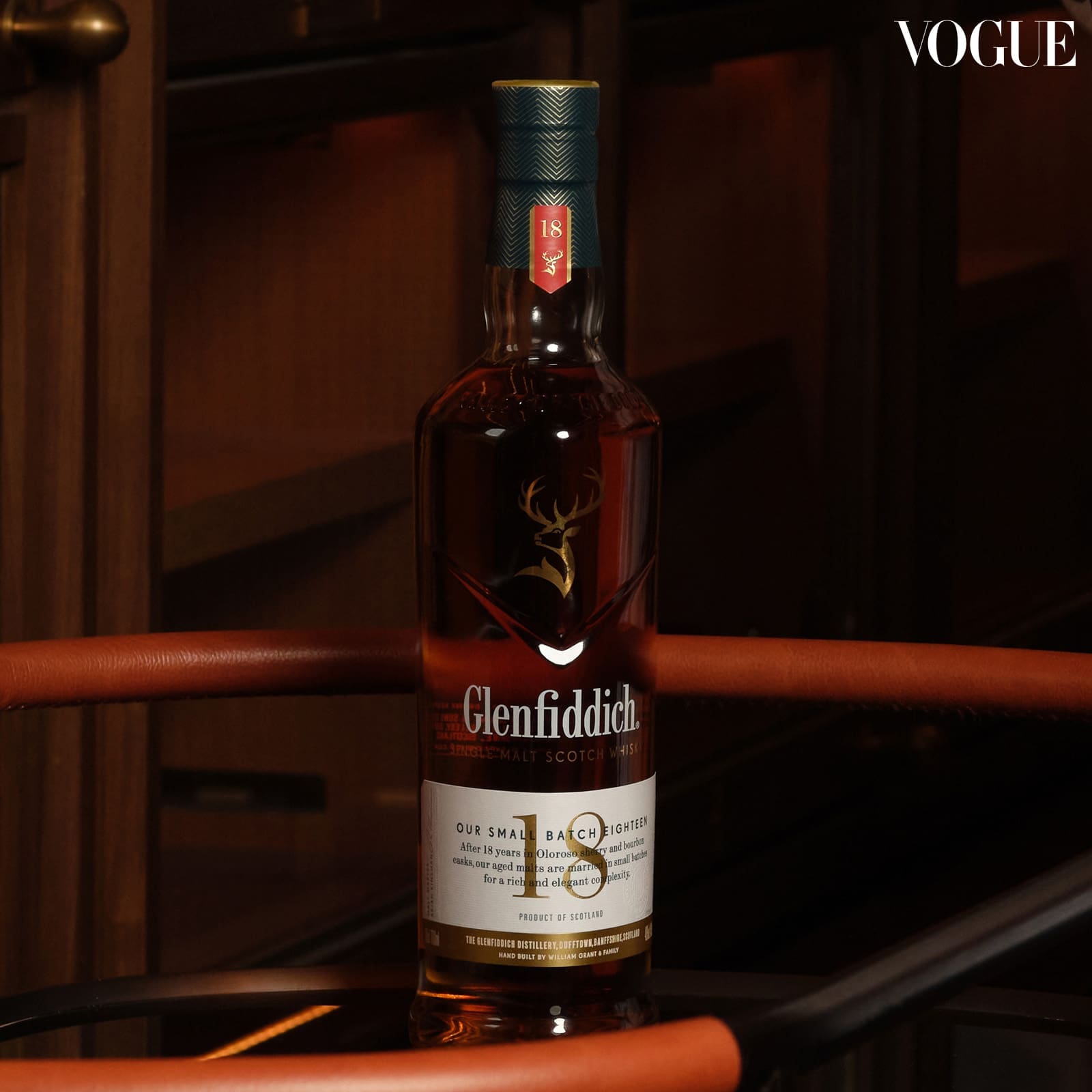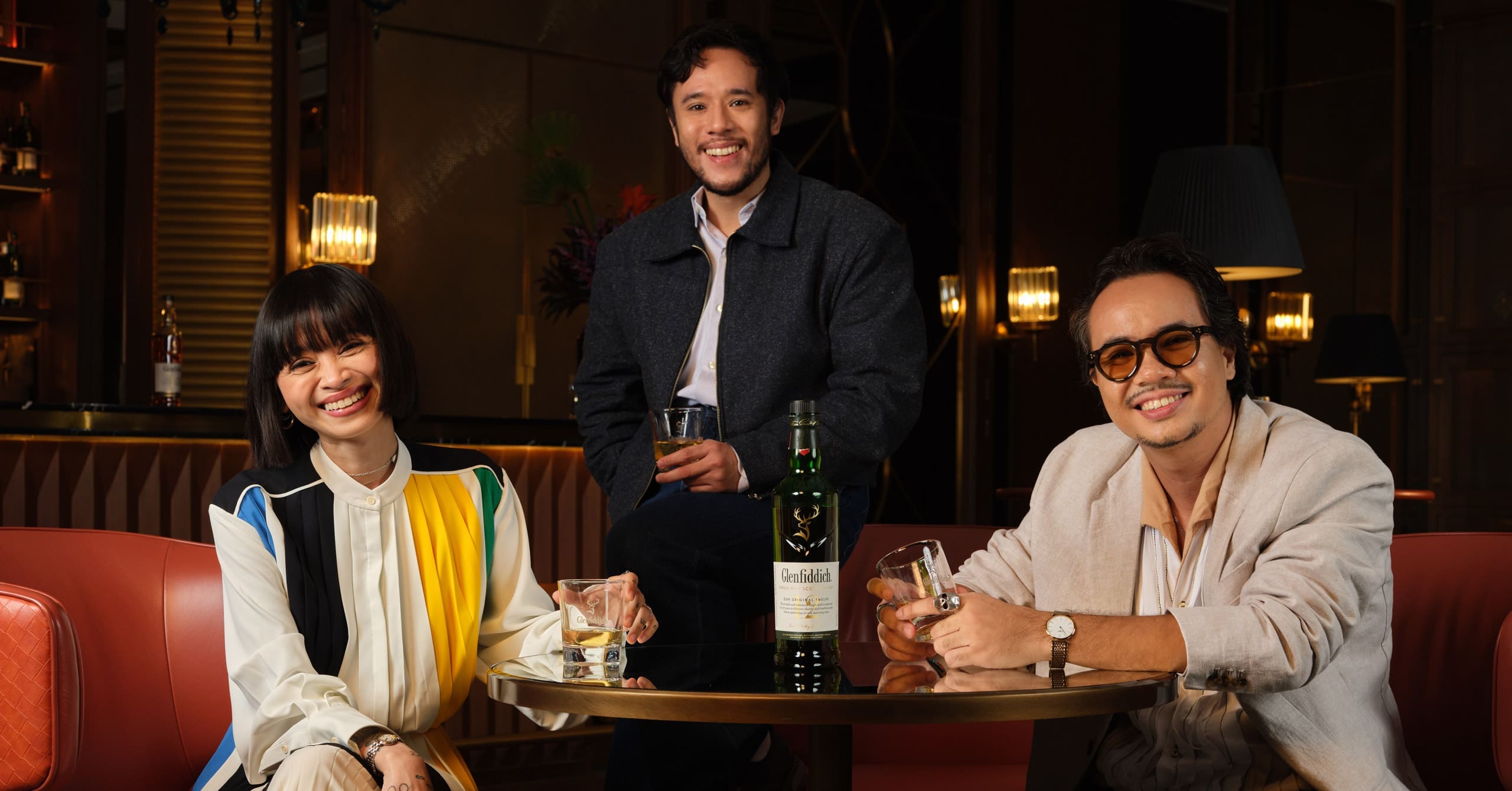Driven by the guiding question, “Where Next?”, Glenfiddich honors trailblazers who nurture connections and promote growth. This initiative is a tribute to breaking new ground and venturing into uncharted areas—principles that visual artists Shaira Luna, Artu Nepomuceno, and Pepe Diokno embody through their creative endeavors. Photographed by Jan Mayo
Driven by the guiding question, “Where Next?”, Glenfiddich honors trailblazers who nurture connections and promote growth. This initiative is a tribute to breaking new ground and venturing into uncharted areas—principles that visual artists Shaira Luna, Artu Nepomuceno, and Pepe Diokno embody through their creative endeavors. Photographed by Jan Mayo
Three Filipino visual artists reflect on their journeys, the risks they’ve taken, and how they continue pushing their craft’s boundaries.
Shaira Luna was supposed to be a doctor. Artu Nepomuceno was on a path to the culinary arts. From his perspective, Pepe Diokno thought he had entered the filmmaking world prematurely despite an early success in his venture. More than a decade ago, each supposed path was their trajectory. However, a few pivotal moments in their lives redirected their paths, and today, they are some of the sought-after creatives in their respective industries, amassing awards and recognition for their work.
From taking risks and persevering despite the odds, it’s worth noting the common threads that bind them: risk, experimentation, and unwavering commitment to their craft. These qualities are also familiar to Scottish distillery Glenfiddich, creating, pioneering, and honoring like-minded individuals, called “mavericks.”
In a compelling conversation as part of Glenfiddich’s “The Where Next Club,” a platform that celebrates pioneers and growth, mavericks Luna, Nepomuceno, and Diokno aren’t afraid to ask, “Where next?”
Shaira Luna’s journey to imagery
Luna’s entry into photography was anything but conventional. Initially, the 37-year-old fashion and commercial photographer was bound for a life in medicine. In her late teens, she was already present in the music circuit, photographing musicians and the band scene in the 2010s. “It wasn’t really what was expected of me at that time,” she recalls.


Despite having no formal education in photography, the fashion and commercial photographer saw every shoot “as an opportunity to learn and grow.”
Luna’s work is marked by a playfulness and curiosity that transcends traditional genres. “I’ve always been super curious and not really afraid to go outside of my so-called style,” she reflects. But on marrying her style with commercial work, she explains that she enjoys this aspect because “when it’s technical, I’m learning at the same time.”
“Everything I did before, I really felt [it] was risky, but everything paid off.”
Shaira Luna reflecting on her journey from medicine to the visual arts
When the group talked about the future of storytelling, the photographer reflected on finding inspiration not in predicting the future but in embracing the past. “I just want to embrace what is already available and what has been created,” she asserts. Listening to other mavericks, she remains open to seeing where the journey leads next.
Artu Nepomuceno on “capturing chaos”
Chaos is a consistent element in Nepomuceno’s shoots. “I’m never comfortable in a shoot unless it’s really messy,” he admits, adding that this pursuit of “chaos” grants his work a unique, dynamic quality. The taste for “disruption” may be attributed to his initial hurdle of entering the world of visual arts. Inspired to take on the same path as his late grandfather, film producer and director Luis Nepomuceno, the then-aspiring filmmaker was met with a “no” and was redirected to become a photographer first.


“My grandfather goes, ‘If a movie is a story created with a thousand images, you have to be able to tell a story with a single image first.’ And that kind of just stuck [with me,]” he reflects, a principle that anchors his work.
“And that also came with a slight curse, which was no photograph is worth it unless there’s a story written all over that image. I think that all ties down with something that’s very deeply connected with me.”
Artu Nepomuceno on how grandfather Luis Nepomuceno’s guidance led to the foundation of his photography principles
In his hopes for the future of Philippine photography, the photographer hopes that it will be rooted in education to create quality and meaningful storytelling. “How can we make images matter not by quantity but quality?” he asks, advocating for impactful, life-changing visuals.
Pepe Diokno on telling authentic stories
The producer-director’s entry into filmmaking came at the young age of 21 for the film Engkwentro, driven by a passion that pushed him to take significant personal and financial risks. “I wish I had done more short films or taken other roles,” reflects the producer-director. Despite initial setbacks and apprehensions, he ventured into advertising directing commercials, with some becoming viral on social media.


His methods for creating a narrative in film and commercials come from consistency—a structured yet flexible approach to his creative process. He muses, “I love consistency when it comes to process. A framework or skeleton of a routine allows me to improvise. I have a solid foundation of which I can step in order to push boundaries.”
“…If you keep doing the same thing then you’ll eventually sort of run out of steam or people will get tired of it. I think there is also a need to innovate.”
Pepe Diokno reflecting on the balance of consistency and flexibility in his creative process
In discussing the heart of storytelling, Diokno emphasized the importance of staying true to the essence of a story, even when commercial demands come into play. “Whenever there’s a consideration like casting or product placement, I always go back to the heart of the story,” he shares.
After a hiatus to explore advertising, Diokno has returned to filmmaking with the 2023 Metro Manila Film Festival hit GomBurZa and is currently working on the musical film adaptation of Himala. He remains positive with his renewed vigor, and eagerness to adapt to new platforms while hoping for a resurgence in cinema-going experiences. “I [hope] that, like what we saw with vinyl or theatre, these old mediums can come back and thrive.”

Watch the full-length episode of Glenfiddich Where Next Club: A Conversation Through a Maverick’s Lens on Vogue Philippines’ official YouTube channel.
Photography by Jan Mayo. Video by Tin Villanueva. Art Direction by Andie Quintos and Christina Zabat. Styling by Gee Jocson Studio. Make-up by Angel Oh and Cathy Licas of Nix Institute of Beauty. Hair by Jessey Miranda of Nix Institute of Beauty. Produced by Robert Bradly Hao. Project Implemented by Ian Urmaza. Photographer’s assistants: Keren Agonoy and Benjamin Harangote. Written by Christina Zabat. Shot on Location at Skybar, Solaire Resort North
